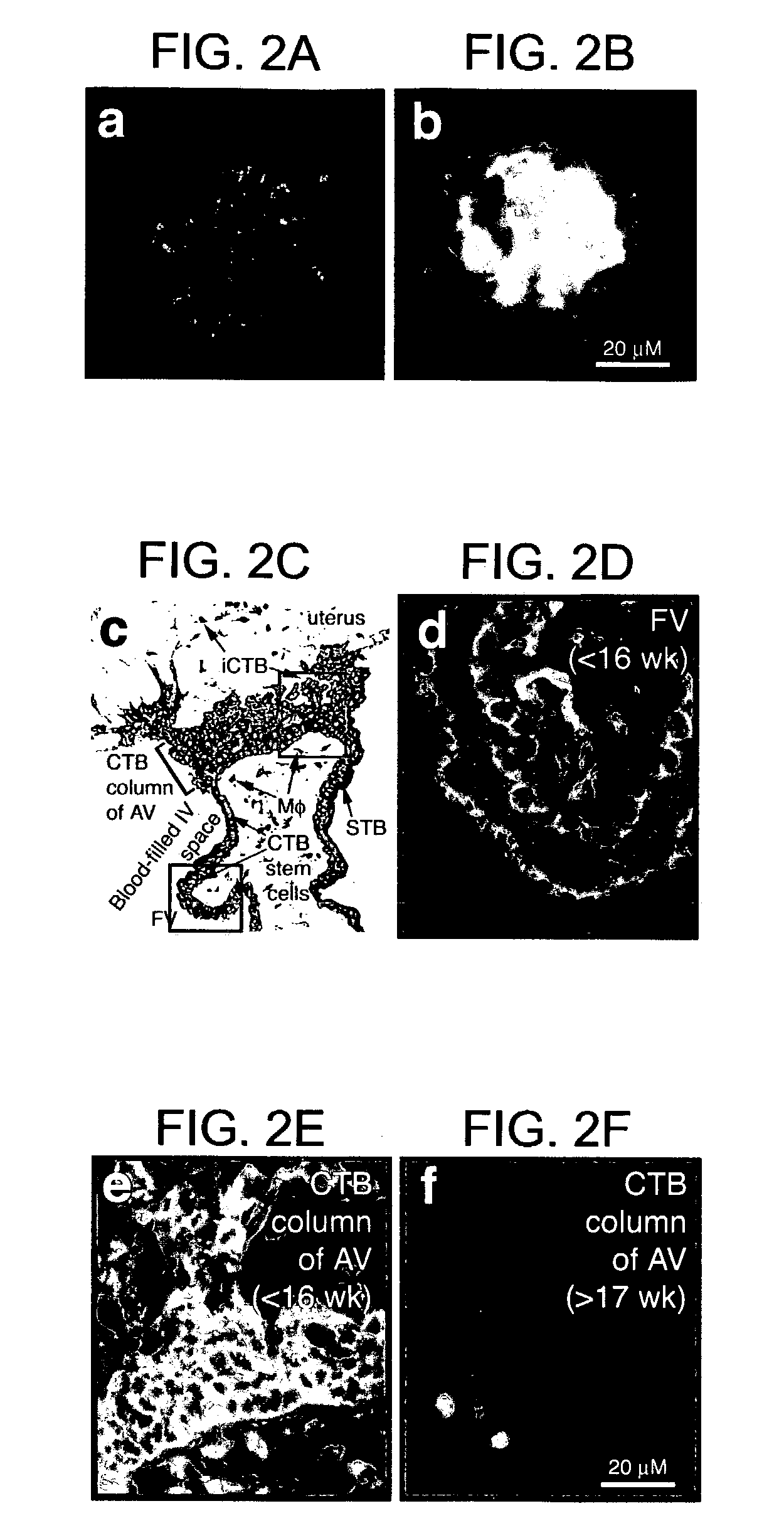Method of determining endometrial receptivity
a cell adhesion and endometrial technology, applied in the field of endometrial receptivity determination, can solve the problems of low success rate of ivf/et, high incidence of early pregnancy loss, and inability to provide contraception. to achieve the effect of inhibiting cell adhesion and inhibiting pregnancy
- Summary
- Abstract
- Description
- Claims
- Application Information
AI Technical Summary
Benefits of technology
Problems solved by technology
Method used
Image
Examples
example 1
Expression of L-selectin on Trophoblasts, and L-selectin Ligands on Uterine Epithelium
Methods
Tissue, Cell and Embryo Sources
[0094]Samples of the human maternal-fetal interface were from pregnancy terminations (nonmedical reasons) and uncomplicated deliveries. Villus explants and cytotrophoblasts were isolated and cultured on Matrigel as described. Genbacev et al. (1992) Placenta 13, 439–61; Librach et al. (1991) J Cell Biol 113:437–49. Endometrial biopsies were from women undergoing stimulated cycles for oocyte donation (11 donors) and natural cycles (1 donor). Phase of the menstrual cycle was confirmed by measuring plasma progesterone and estradiol. Biopsies were taken during the nonreceptive phase (day 6) and after ovulation (days 14–20). Three women (2 oocyte donors; 1 natural cycle donor) were biopsied every day for 6 days starting on the day of ovulation. Human neutrophil isolation and Jurkat cell culture were as described. Prakobphol et al. (1999) Biochemistry 38: 6817–6825 (1...
example 2
Detection of L-selectin Ligand in Saliva
[0115]L-selectin ligand was detected in saliva samples. The results are shown in FIG. 7. Salivary components express the MECA-79 (selectin ligand) epitope during the window of receptivity, pregnancy and lactation. Samples of whole saliva were collected by expectoration from a single donor during the nonreceptive (lanes 1–3) and receptive (lanes 4 and 5) stages of the cycle. Additional samples were obtained from the same donor during pregnancy (lanes 6 and 7) and lactation (lanes 8 and 9). The samples were separated by sodium dodecyl sulfate-polyacrylamide gel electrophoresis (SDS-PAGE) and stained with Alcian blue, which allowed visualization of the glycoprotein bands in each lane. A gel of the same samples was transferred to nitrocellulose and probed with the MECA-79 antibody, according to the methods described above. MECA-79 recognizes an important class of sulfated, high-affinity L-selectin ligands. As shown in FIG. 7, antibody reactivity d...
PUM
 Login to View More
Login to View More Abstract
Description
Claims
Application Information
 Login to View More
Login to View More - R&D
- Intellectual Property
- Life Sciences
- Materials
- Tech Scout
- Unparalleled Data Quality
- Higher Quality Content
- 60% Fewer Hallucinations
Browse by: Latest US Patents, China's latest patents, Technical Efficacy Thesaurus, Application Domain, Technology Topic, Popular Technical Reports.
© 2025 PatSnap. All rights reserved.Legal|Privacy policy|Modern Slavery Act Transparency Statement|Sitemap|About US| Contact US: help@patsnap.com



